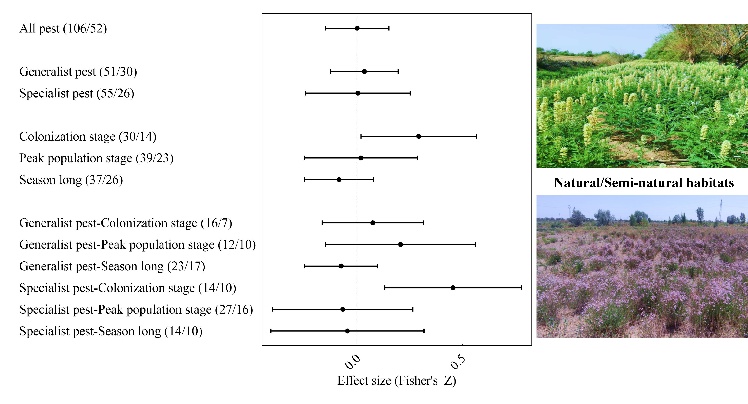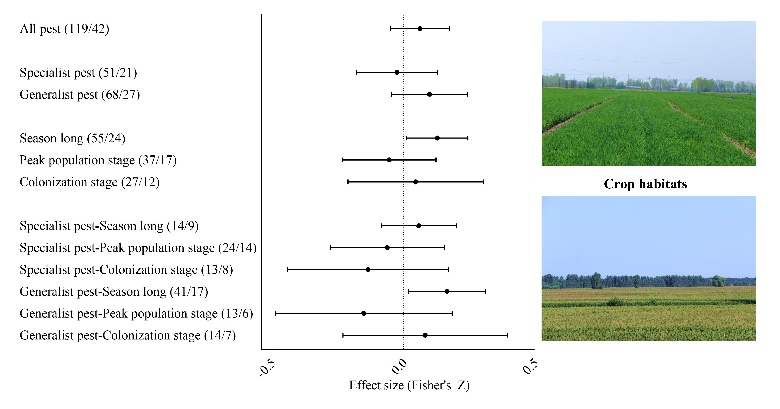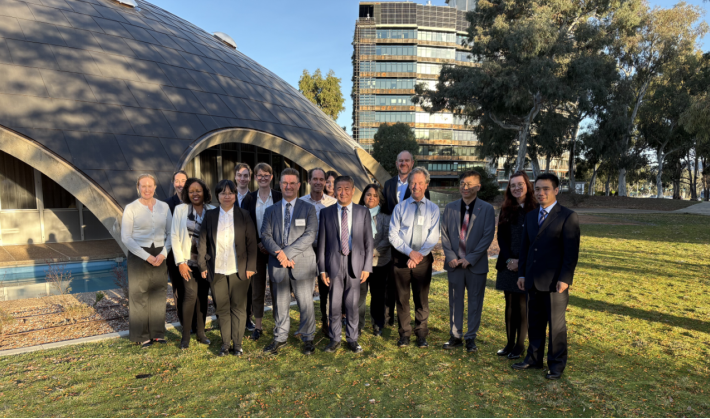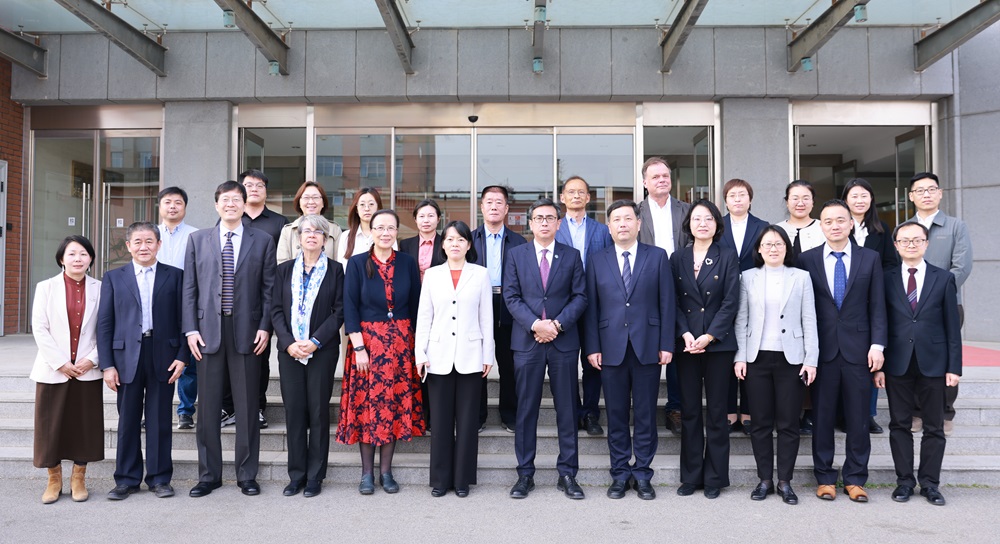IPPCAAS Systematically Elucidates Context-Dependent Effects of Agricultural Landscapes on Pest Population Dynamics
Recently, the Economic Crop Pest Monitoring and Control Innovation Team at the Institute of Plant Protection, Chinese Academy of Agricultural Sciences (IPPCAAS), published a review paper titled Context-dependent response of crop pests to landscape composition in Entomologia Generalis . The study systematically explores the context-dependent mechanisms by which landscapes regulate pest population dynamics, clarifies how key contextual factors influence the pest-regulating effects of landscapes, and provides a scientific foundation for innovating regional pest management strategies at the landscape scale.
In recent years, frequent and severe outbreaks of agricultural pests have increasingly threatened food security and ecological sustainability. Addressing this challenge requires ecological-based regional management strategies that emphasize leveraging ecological and non-ecological factors to regulate interactions among plants, pests, natural enemies, and their environments within regional farmland systems, thereby sustainably suppressing pest populations below control thresholds. The composition and structure of landscapes reflect the spatial distribution and temporal dynamics of resources critical to pests and their natural enemies. Changes in landscape composition can directly regulate pest occurrence through "bottom-up" effects or indirectly influence pest dynamics via natural enemy-mediated "top-down" effects. Understanding the general principles of how landscape patterns regulate pest populations is key to implementing effective regional pest control measures, yet this remains a persistent challenge in landscape ecology and ecologically based pest management.
Due to the complexity of agricultural landscapes, the impact of landscape patterns on pest populations often exhibits significant context dependency, leading to substantial variability across studies and hindering the establishment of unified principles. Through a systematic literature review and global meta-analysis, this paper identifies critical contextual factors—including species-specific traits at the individual level, population-level processes, habitat quality at the landscape level, and spatiotemporal scales of research—that shape the effects of landscapes on pest regulation. The study reveals that pest feeding habits, population development stages, and crop habitat quality are pivotal in determining landscape-mediated pest control outcomes. Increasing semi-natural habitats of landscapes generally promotes early colonization of specialist pests in fields, while expansive high-quality crop habitats elevate the population density of generalist pests. Additionally, low-quality crop habitats significantly reduce pest densities over the whole growing season.
These findings offer new perspectives for understanding the mechanisms underlying landscape-mediated pest regulation and provide scientific support for developing regional pest management strategies grounded in landscape ecology. IPPCAAS is the primary affiliation of this research. The study was funded by the National Natural Science Foundation of China and the National Cotton Industry Technology System, and other projects.


-
 IPPCAAS Experts Visit Australia to Promote In-Depth China–Australia Cooperation in Plant Biosafety
IPPCAAS Experts Visit Australia to Promote In-Depth China–Australia Cooperation in Plant Biosafety -
 China-France cooperation in plant protection was further strengthened
China-France cooperation in plant protection was further strengthened -
 New progress was made for the Lao PDR – China Joint Laboratory for Plant Protection
New progress was made for the Lao PDR – China Joint Laboratory for Plant Protection -
 Collaboration on sustainable agriculture practices highlighted at the MARA China – CABI Joint Lab meeting
Collaboration on sustainable agriculture practices highlighted at the MARA China – CABI Joint Lab meeting
